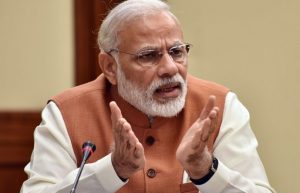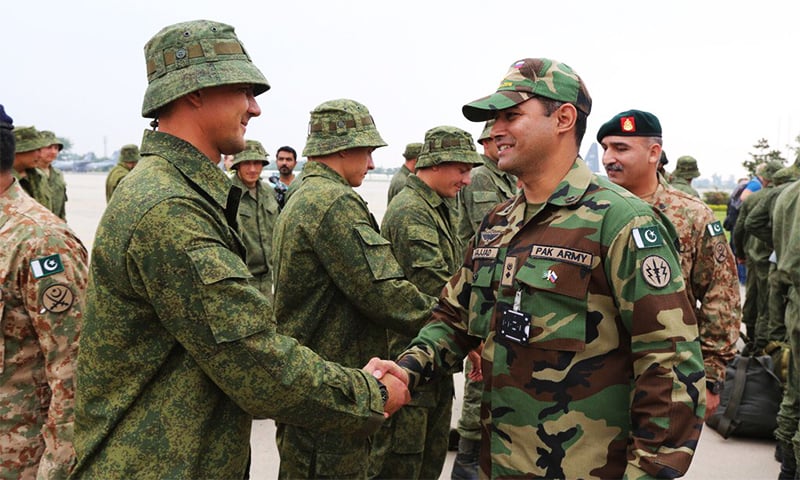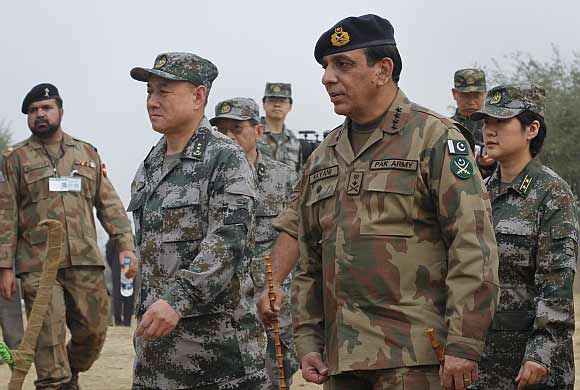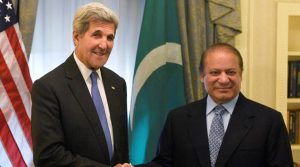By Sukumar Muralidharan
In a state of heightened anxiety, media reports after the September 18 suicide attack on an army post in Uri in northern Kashmir, were some solace for India. There was some satisfaction in the swiftness of the condemnation and some delight at how foreign governments that matter, had shared India’s almost reflexive blaming of Pakistan.
Where the Indian media found the world falling short of expectations it simply invented an alternate reality.
Particularly crucial for India was the reaction from Washington DC. The Uri attack claimed eighteen Indian lives and happened just days ahead of Pakistan Prime Minister Nawaz Sharief’s appearance before the UN General Assembly, when he expectedly made a plea for intervention in Kashmir. Uri afforded ample ammunition for India to fire back and condemn Pakistan’s alleged sponsorship of global terrorism.
The Indian media contrived to see a stern “dressing down” in US Secretary of State John Kerry’s brief meeting with Nawaz Sharief on the sidelines of the UN General Assembly. The official transcript of their meeting, published soon afterwards, only spoke of shared concern over terrorism and the US’s appreciation of “recent efforts by Pakistani security forces to counter extremist violence”. Regional issues entered the dialogue, notably in regard to developments in Afghanistan. And the two sides seemed united in concern at “recent violence in Kashmir – particularly the army base attack”, which made it imperative for “all sides to reduce tensions”.
Against fanciful media creations, the actual record of the meeting revealed ample reason for India to worry, especially the reading of the Uri attack within the larger context of Kashmir’s ongoing wave of civil unrest and violence. The final upshot of the meeting between Kerry and Nawaz Sharief was simply that for all its unhappiness with Pakistan’s mixed record of compliance with its demarches, the US is willing to recognise its many constraints and unprepared to let go of an alliance vital to preventing an Afghan unravelling.
Pakistan’s unalterable geographical status and its military competence, make it a partner of choice for regional and global powers with stakes in the Central Asia region. On September 24, Russia began its first joint military exercises with Pakistan, a development that would have been beyond the realms of possibility in the long Cold War years, when Pakistan was the staging post for various US intelligence and military operations.

Immediately after Uri, the Indian media reported that Russia had cancelled planned military exercises. When that triumphalism proved unfounded, the Russian embassy in Delhi offered some words of consolation, emphasising the limited scope of the military exercises and the care taken to avoid any footprints in “so-called Azad Kashmir” or any other “sensitive or problematic areas like Gilgit or Baltistan”.
In the briefly lived bubble when foreign opinion seemed to be flowing entirely India’s way, there was one dissonant note. A cross-section of opinions harvested by a large English daily had a former Indian foreign secretary commenting in some disdain, that China always put business interests ahead of principle. Obviously because it has huge investments committed in Balochistan, China he said, was one of the few overseas governments to express an adverse opinion on India’s newly found commitment to human rights in that restive and expansive province of Pakistan. The Gwadar port that China has built on the Balochistan coast is designated as the terminal point of an ambitious infrastructure project, the China-Pakistan Economic Corridor (CPEC), which would run the length of Pakistan and enable China direct access into Arabian sea trade routes.
This was a threatening prospect in itself, adding to India’s anxieties over China’s supposed military observation post in Burma’s Coco Islands and its active role in the Hambantota port in the south of Sri Lanka. And aside from the strategic threats involved, the CPEC was also a slight to India’s deeper sense of identity in that it ran a part of its course through “Azad Kashmir” which was “historically part of India”.
This statement tapped into a deep vein in India’s strategic culture, which impedes a pragmatic engagement with neighbours. To claim what Pakistan calls “Azad Kashmir” as a historical part of India is to open the doorway to an irredentism that has no obvious limit, since Pakistan, Bangladesh — not to mention Burma at one time — were parts of political units administered from “historic India” at various points of time.
Meanwhile, a world removed from these historically shaky constructs, the state of Haryana in north-western India was debating how best to lay out the red carpet for a Chinese real estate developer with a $ 10 billion plan for an industrial park development. The money involved was considerably smaller than the $ 46 billion reportedly going into the CPEC, but it was in the same ballpark in the number of digits following the dollar sign. Dalian Wanda, the Chinese real estate giant, proposed to bring in the entire investment through commercial borrowings, but the quantum involved being well above the ceiling for this route, the Reserve Bank was reportedly proposing an alternate plan of rupee denominated bonds.

Capital especially if denominated in dollars, clearly trumps all unsettled questions of identity and territory. And that is the unique tension in India’s relations with its giant neighbour. For the record, each side accuses the other of being in wrongful occupation of its territory. These were a matter of discussion at one time, but matters escaped India’s control once politics escalated into the military mode. Prior to this escalation, a number of experts have argued — though without clear documentary evidence — that China offered to settle in a give-and-take spirit as early as 1957: reciprocal recognition by China of India’s claims in the eastern sector (present day Arunachal Pradesh) and by India of China’s claims over Aksai Chin.
That was a pragmatic solution by any account, since Aksai Chin remained beyond any form of access from all parts of India, while for China it was a vital link between its two most expansive regions, Tibet and Xinjiang. But Prime Minister Jawaharlal Nehru allowed that opportunity to lapse by not responding to China, since he had a voluble lobby within his Congress party which insisted on committing India to the cause of Tibet’s liberation, while rejecting the slightest territorial adjustment as the first step towards the unravelling of the nation state.
A pragmatic solution was possible, but ideology captured the terrain and driven on by a right-wing jingoist media that saw China in terms framed by the US, Nehru adopted a “forward” posture, urging a woefully unprepared military to take on a challenge on terrain it had little experience operating in. A later inquest which has remained classified for five decades, declined to go into the wisdom of the “forward” posture, but conceded that it was a policy that had no backing in terms of military competence.
The bruising border encounter of 1962 led to a prolonged sulk, but the mood started improving from about the late 1980s, when Nehru’s grandson Rajiv Gandhi was Prime Minister. In 1988, a “joint working group” was set up between India and China to discuss the border and all other issues. Cultural ties, including Indian pilgrimages to the Manasarovar lake in Tibet, began to expand and the path towards expanding economic ties was slowly opened up.
Things began to sour in the mid-1990s. India had a crisis of global dimensions on its hands from the insurgency that broke out in Kashmir in 1990, with Pakistan cheering it on as long overdue settlement of debts from 1947 and China clearly endorsing that position.
Business was meanwhile taking the discourse to an entirely different plane. In the early 1990s, taking fiscal year 1992 as representative, India’s total trade with China amounted to a meagre $ 69 million, with Hong Kong, then preparing for the 1997 transfer of sovereignty, accounting for another $720 million. In overall terms, China and Hong Kong together contributed a mere 2.1 percent to India’s trade basket. In comparison, the US was 13.2 percent and the European Union (EU), a very much more substantial 28.2 percent.

As political ties began to fray, business picked up momentum. By 2002, China was already over 6 percent of India’s foreign trade basket, as against the US’s 13 percent and the EU’s 22 percent. Currently, China accounts for $ 92 billion in India’s foreign trade, or over 12 percent of the total, well over the US’s 8.5 percent and just under the EU’s 13 percent.
Clearly, India would like to keep the business ties while insisting that China give up its political bonds with Pakistan. That unfortunately, is not a bargain on offer, which means that India would have to make a choice. A mildly coercive approach has been evident in recent times, with India seeking to sign up as a strategic partner with the US “pivot to east Asia” – a thinly disguised effort to pressure on China to back down from its increasingly influential political role in the region. That aspiration – and promise — has won India two visits from Barack Obama during his eight years as US President. But with the Pax Americana mired in desperate difficulties in the Arab world and Eastern Europe, India’s offer is likely to be placed on hold, since it brings more complications than the US can currently handle.
Meanwhile, Russia has opened another frontal challenge to the Pax Americana with a naval exercise in the South China Sea with China. This adds another wrinkle to the new order in the east that the US has been seeking to craft, with India’s eager participation.

These are complications that cannot easily be ironed out: for India to turn its back on its most durable and reliable strategic relationship with Russia, for the mirage of a partnership with the US, while confronting China for its “all-weather friendship” with Pakistan.
Soon after the funerals for the eighteen young men killed in Uri, the Indian media began its accustomed cacophony, loudly declaring that telltale signs of Pakistan’s involvement had been found and baying for a bloody vengeance. From sources yet to be traced, stories began appearing about a cross-border commando operation in which between twenty and two hundred Pakistani terrorists had been eliminated. These were swiftly denied by responsible spokespersons within the Indian Army command hierarchy even as the rare piece of diligent journalistic investigation revealed that the alleged Pakistan markings on the weapons used at Uri were entirely a media fabrication.
Within a week of Uri, the political leadership had apparently woken up to harsh realities. In his plenary address to the ruling Bharatiya Janata Party’s national executive meeting in the southern city of Kozhikode, Prime Minister Modi spoke of strategic restraint being a virtue. There was no hint though, that strategic wisdom had dawned and a willingness to shed the detritus of history and work towards a new beginning for the good of South Asia.
The media meanwhile could celebrate mission accomplished. Even if war had not broken out, the mood had been sufficiently embittered to make the political costs of any effort at rapprochement in the neighbourhood, prohibitive. Continuing antagonisms, that could break out in hostilities at the slightest spark, seem the destiny of the people of India and Pakistan.
(ENDS)




























































